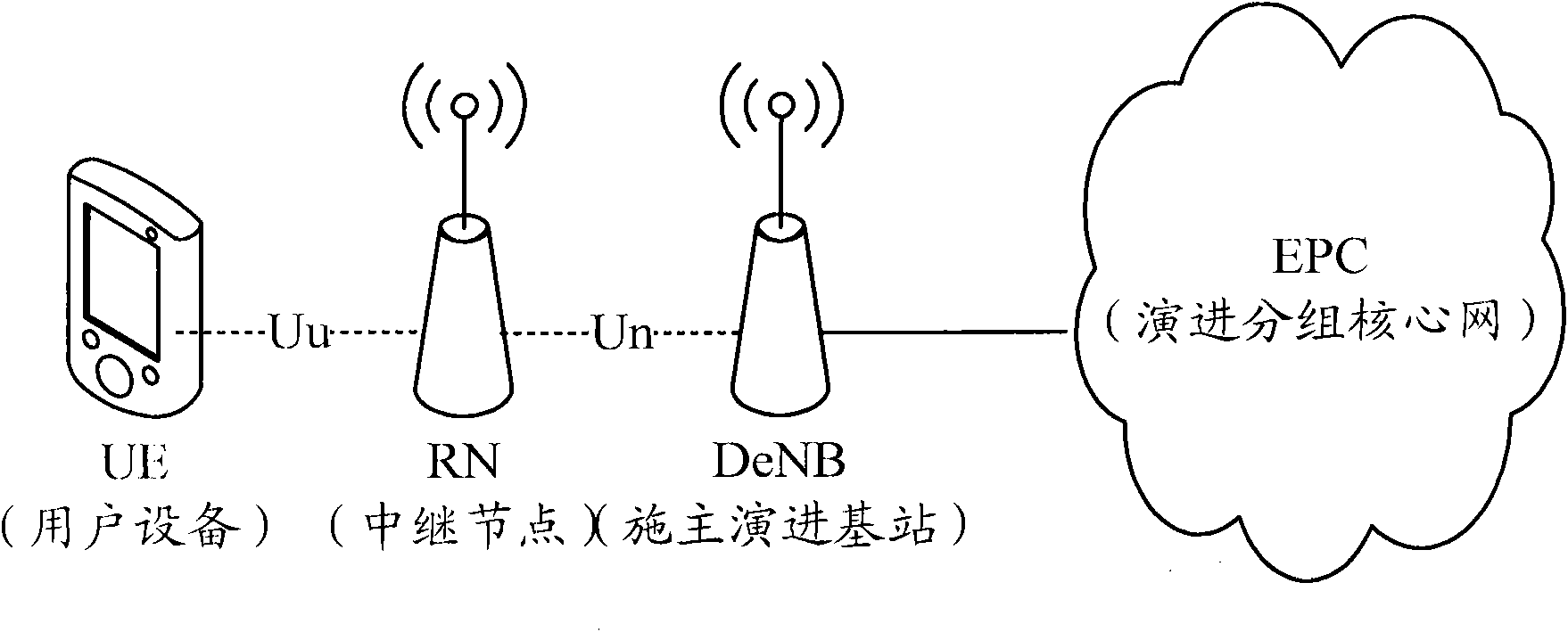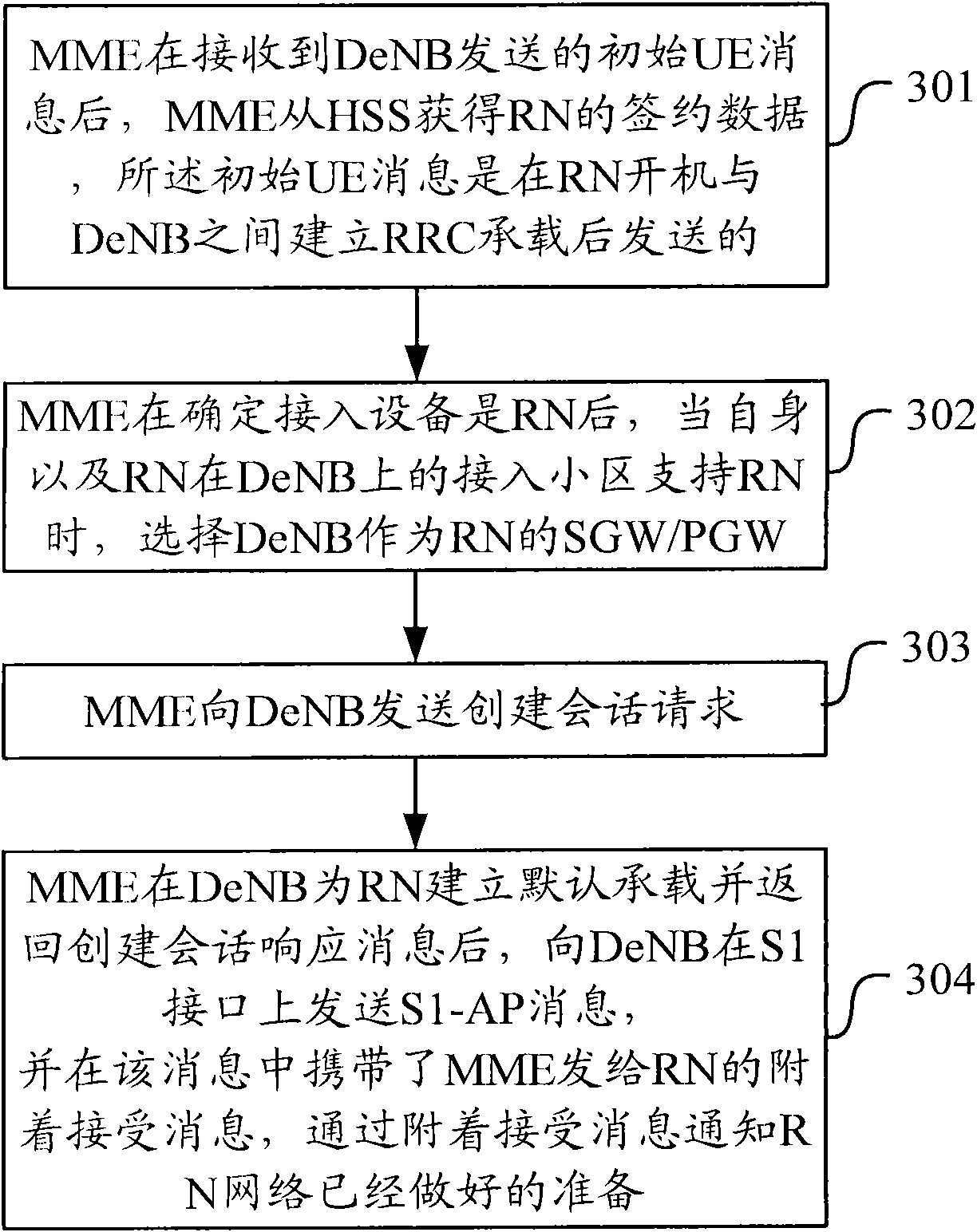Relay node non-access stratum processing method and equipment
A technology of relay nodes and processing methods, which is applied in the field of non-access layer process processing, and can solve problems such as not being able to know the support status of the network side
- Summary
- Abstract
- Description
- Claims
- Application Information
AI Technical Summary
Problems solved by technology
Method used
Image
Examples
Embodiment 1
[0126] In this embodiment, a NAS message is used for notification, and the establishment of a dedicated bearer is initiated after the RN downloads the OAM. Figure 5 It is a schematic diagram of the implementation flow of the RN startup process in Embodiment 1, as shown in the figure, which may include the following steps:
[0127] In step 501, the RN starts up and establishes an RRC bearer with the DeNB.
[0128] In step 502, the DeNB selects an MME for the RN, and sends an initial UE message (Initial UEMessage) to it.
[0129] Step 503-Step 505, security authentication is performed between the network and the RN. If the authentication is passed, the MME obtains information such as the subscription data of the RN from the HSS.
[0130] Step 506-Step 507, if the selected MME supports RN, then the MME judges the access entity type and the access cell type. If it is known that the access entity is RN and the current serving base station is DeNB, select DeNB as the SGW / PGW of ...
Embodiment 2
[0149] In this embodiment, a NAS message is used for notification, and a dedicated bearer is established before the RN downloads the OAM.
[0150] Change the order of the processing of step 512 and RN in Embodiment 1:
[0151] If the RN receives the indication of "the network is ready" from the NAS message, the RN can maintain the established PDN connection. If necessary, a request can be made to the network side to establish a dedicated bearer.
[0152] If the RN does not receive the indication of "the network is ready", after the RN detach from the network side, it selects an eNB that can serve as a DeNB for access, and reattaches.
[0153] RN downloads configuration data from OAM. Then establish the necessary S1 interface and X2 interface, and you are ready to work.
[0154]The implementation of other steps can refer to embodiment 1.
Embodiment 3
[0156] In this embodiment, the NAS message is used for notification, and the process of establishing a dedicated bearer is initiated by the DeNB.
[0157] For the above implementation, reference may be made to steps 501-505 of Embodiment 1. That is, the RN starts up and establishes an RRC bearer with the DeNB. The DeNB selects an MME for the RN, and sends the initial UE message to it. Security authentication is performed between the network and the RN. If the authentication is passed, the MME obtains information such as the subscription data of the RN from the HSS.
[0158] If the selected MME supports RN, then the MME judges the type of the access entity and the type of the cell to be accessed. After learning that the access entity is the RN and the current serving base station is the DeNB, select the DeNB as the SGW / PGW of the RN; then, the MME sends a session creation request to the DeNB, and establishes a default bearer for the RN in the DeNB. In the session creation r...
PUM
 Login to View More
Login to View More Abstract
Description
Claims
Application Information
 Login to View More
Login to View More - R&D
- Intellectual Property
- Life Sciences
- Materials
- Tech Scout
- Unparalleled Data Quality
- Higher Quality Content
- 60% Fewer Hallucinations
Browse by: Latest US Patents, China's latest patents, Technical Efficacy Thesaurus, Application Domain, Technology Topic, Popular Technical Reports.
© 2025 PatSnap. All rights reserved.Legal|Privacy policy|Modern Slavery Act Transparency Statement|Sitemap|About US| Contact US: help@patsnap.com



